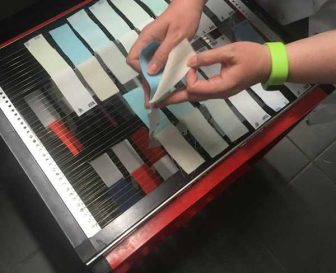The washing fastness tester is an instrument used to measure the degree of color migration or change of textiles during washing or dry cleaning. It can simulate different washing conditions, such as temperature, time, detergent, friction, etc., to evaluate the washability of textiles. The washing fastness tester is an important piece of equipment for textile quality control and inspection, therefore, it is very necessary to operate and maintain it correctly.

This article will describe some best practices for operating and maintaining a washing fastness tester to ensure the accuracy of test results and the longevity of the instrument.
Best practices for operating a washing fastness tester:
1. Before using the washing fastness tester, check whether the instrument is in good condition, whether the power supply is normal, whether there is enough water in the water tank, whether the thermostat is set at the required temperature, whether the tachometer is calibrated, and whether the timer is accurate.
2. According to the test standard or customer requirements, select the appropriate detergent and reference cloth, and weigh and prepare according to the specified ratio. Detergents and reference cloths should be stored in a dry, cool, and airtight place away from light, moisture, pollution, etc.
3. Cut the sample to be tested and the reference cloth according to the specified size, and clamp them on the stainless steel frame with stainless steel clips. Take care that the clips are evenly distributed on the frame to avoid wrinkling or warping. At the same time, it should be ensured that there is a certain gap between the sample and the reference cloth so that the water flow can fully penetrate.
4. Put the frame containing the sample and reference cloth into the stainless steel tank of the washing fastness tester, and add an appropriate amount of the prepared washing solution. Be careful not to overfill or empty the tank, so as not to affect the friction effect or cause overflow.
5. Close the tank lid and start the washing fastness tester, set the parameters such as speed and time, and press the start button. During the test, the operation of the instrument should be observed at any time, and if there is any abnormality, it should be stopped immediately and the fault should be eliminated.
6. After the test, remove the frame from the tank, and rinse the sample and reference cloth with clean water to remove residual washing liquid. Then spread the sample and reference cloth on clean white paper, and absorb excess water with absorbent paper. Finally, put the sample and reference cloth into a constant temperature and humidity box to dry.
7. After drying, use a gray ruler or a color difference meter to evaluate the color of the sample and reference cloth, and record the test results. According to the degree of color change or migration, judge the color fastness level of the sample to washing.

washing fastness tester
Best practices for maintaining a washing fastness tester:
1. Regular maintenance: Regular maintenance of the tester, including cleaning, lubrication and replacement of wearing parts. Follow the manufacturer's recommendations, which can help ensure your tester remains in top condition.
2. Reasonable storage: Store the tester safely, avoid excessive extrusion and high temperature environment, to ensure the long-term integrity and performance of the tester.
3. Perform Calibration: Calibrate the tester regularly to ensure the accuracy and reliability of the results. Use the calibrator according to the manufacturer's instructions and keep records.
4. Perform inspection: For electrical components, all connections and wiring should be inspected. Also, check all mechanical parts and make sure they are working properly.
5. Safe use: When using the tester, please make sure to follow all operating instructions, and provide staff with necessary safety training and protective tools to ensure the safety of operators.
The above are the best practices for operating and maintaining the washing fastness tester. Regular inspection and maintenance are very important to improve the performance and life of the tester.
Prev: What are the key factors to consider when selecting a rubbing color fastness tester?
Next: Alcohol Eraser Pencil Wear Tester – Alcohol Eraser Pencil Wear Tester